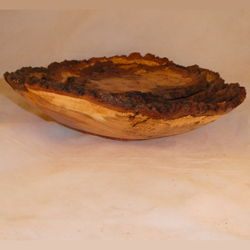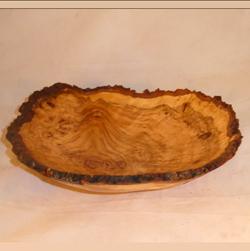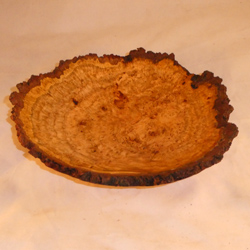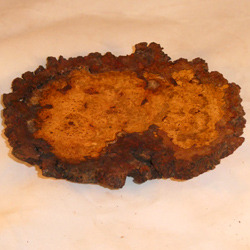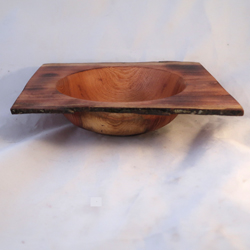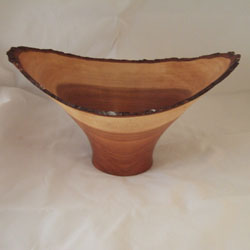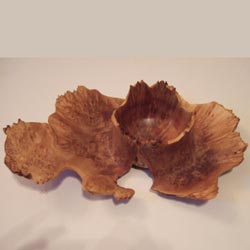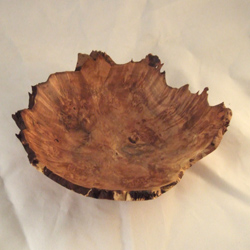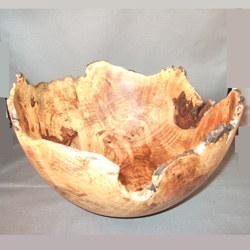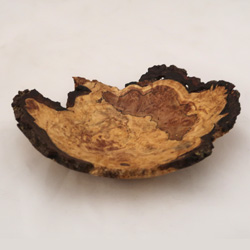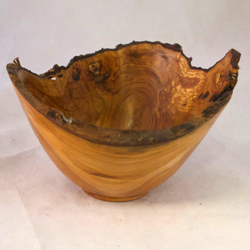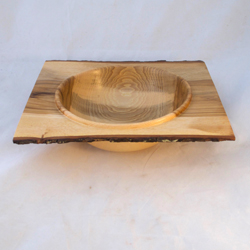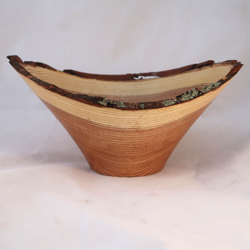Natural edge bowls are made so that the top of the bowl is the outside surface of the tree. Many natural edged bowl still retain the bark. Burls are very well suited for natural edge bowls. When you start turning a cherry burl, you don’t know what you will find inside. It could have bark inclusions or knotholes that have rotted away, or it could be hollow inside because it was colonized by carpenter ants. If you are fortunate it is solid and free of internal cracks and damage.
Examples of currently available natural edge bowls
- A nested set of four natural edge cherry burl bowls. Photographs of individual bowls are in this gallery.
- Large natural edge cherry burl bowl ($150, 12″ x 3″).
- Natural edge cherry burl bowl ($100, 10″ x 2.75″).
- Natural edge cherry burl bowl ($80, 9″ x 2″).
- Small natural edge cherry burl bowl ($50, 7″ x 1″).
- Dogwood bowl in a natural edge board ($75, 6.25″ x 5.5″ x 2″).
- Honey locust “bowl in a board” style natural edge bowl that has been charred (7.5″ x 6.5″ x 1.75″, $60)
Selected natural edge bowls that are no longer available
- Natural edge cherry burl bowl (12″ x 5″)
- Cherry natural edge bowl (12″ x 8″ x 6″)
- Maple burl winged bowl
- Maple burl natural edge bowl (7.5″ x 2.5″)
- Spalted maple burl bowl (~9″ diameter)
- Maple burl bowl (~10″ x8″)
- Spalted maple burl bowl (~6″ x 2″)
- Apple burl natural edge bowl (5″ x 4″)
- Cherry burl bowl (14″ x 11.75″ x 3.5″)
- Elm “bowl in a board” natural edge bowl (9″ x 8″ x 2.75″)
- Honey locust natural edge bowl (10″ x 7″ x 5″)
- Honey locust natural edge bowl turned from a crotch (10.5″ x 2.75″)
